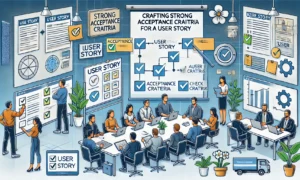Are you curious about what it takes to become a Product Manager (PM)? Product management is an exciting career that combines strategy, technology, and business to create products that solve user problems. If you’re just starting and don’t know where to begin, this blog will break it down step-by-step, so you can confidently start your product management journey.
1. Understand What Product Management Is
Before jumping in, it’s essential to understand what a product manager does. PMs are responsible for guiding a product’s development from idea to launch. They work closely with designers, engineers, marketers, and sales teams to ensure the product meets customer needs and business goals.
Key Responsibilities of a Product Manager:
- Defining the product’s vision and strategy.
- Creating product roadmaps and timelines.
- Gathering customer feedback and identifying problems to solve.
- Collaborating with cross-functional teams (developers, designers, etc.).
- Monitoring product performance after launch.
2. Do You Need a Technical Background?
You might wonder if coding skills are necessary. While having a technical background can help, it is not mandatory. What matters more is understanding how technology works so you can effectively communicate with engineers.
What to focus on instead:
- Learn the basics of how software development works (like Agile or Scrum).
- Familiarize yourself with tools used in product management (e.g., Jira, Trello).
3. Start with Online Courses
One of the easiest ways to begin learning about product management is by taking online courses. These courses introduce you to key concepts, tools, and skills required for the role.
Beginner-friendly product management courses:
- Google Project Management Certificate (Coursera)
- Product Management by Udemy
- Introduction to Product Management by Reforge
- LinkedIn Learning Product Management Basics
4. Get Hands-On Experience (Start Small)
Even if you don’t have a formal role, you can gain product management experience by working on small projects. Here are a few ways to get practical exposure:
- Volunteer: Join open-source projects or offer to manage a side project at your current job.
- Build a Simple Product: Create a blog, a small app, or a website to experience the process of developing a product.
- Participate in Hackathons: These events give you a chance to work with engineers and designers to build something from scratch.
5. Learn Product Management Tools
PMs rely on several tools to plan, track, and manage products. Start familiarizing yourself with these tools early on.
Must-know product management tools:
- Jira / Trello: For project management and task tracking.
- Figma: For wireframing and working with designers.
- Google Analytics: For monitoring product performance.
- Slack: For team communication.
6. Read Blogs, Books, and Listen to Podcasts
To deepen your knowledge, explore resources that provide insights from experienced product managers.
Recommended Books for Beginners:
- Inspired: How to Create Products Customers Love by Marty Cagan
- The Lean Product Playbook by Dan Olsen
- Hooked: How to Build Habit-Forming Products by Nir Eyal
Podcasts to Follow:
- The Product Podcast
- This is Product Management
- Masters of Scale
7. Find a Mentor or Join Product Communities
Mentorship is a great way to learn from someone who’s already in the field. Reach out to product managers on LinkedIn or attend product management meetups. Many communities welcome beginners and offer free events, networking, and learning opportunities.
Popular Product Management Communities:
- Mind the Product
- Product School Community
- Product-Led Growth Community
8. Start with an Entry-Level Role
If you’re just starting, look for roles such as Associate Product Manager (APM), Product Analyst, or Project Coordinator. These roles will give you exposure to product management tasks, and you can transition to a full PM role over time.
Where to find product management jobs:
- LinkedIn Jobs
- AngelList (for startup roles)
- Naukri.com
- Wellfound (previously AngelList Talent)
9. Learn How to Build a Product Roadmap
A roadmap outlines your product’s development path over time. Learning to create a roadmap will give you a better idea of how to organize work, set priorities, and plan product features.
Here’s how to start:
- Break down your product into MVP (Minimum Viable Product) and future features.
- Use tools like Productboard or Roadmunk to create simple roadmaps.
- Set clear timelines and milestones.
10. Understand the Metrics PMs Track
Product managers must monitor the performance of their product post-launch. Here are some common metrics you should know:
- Monthly Active Users (MAU): Measures user engagement.
- Net Promoter Score (NPS): Evaluates customer satisfaction.
- Churn Rate: The percentage of customers who stop using the product.
- Customer Acquisition Cost (CAC): Measures how much it costs to acquire a new customer.
11. Build Your Own Portfolio
Even if you don’t have formal product management experience, you can build a portfolio to showcase what you’ve learned. Include projects where you:
- Created a roadmap.
- Collaborated with a team.
- Developed or improved a product idea.
12. Apply for Internships or APM Programs
Some companies offer Associate Product Manager (APM) programs for beginners, giving you a chance to learn on the job. Internships and APM programs are great starting points to get hands-on experience.
Top Companies with APM Programs:
- Uber
- Flipkart
Final Thoughts
Starting a career in product management may seem challenging, but with the right mindset and steps, you can build the skills and experience needed for success. Begin by learning the basics through online courses, practice managing small projects, and network with professionals in the field. Stay consistent, seek opportunities to grow, and don’t hesitate to start small. Remember, every product manager was once a beginner!
Good luck on your product management journey!


